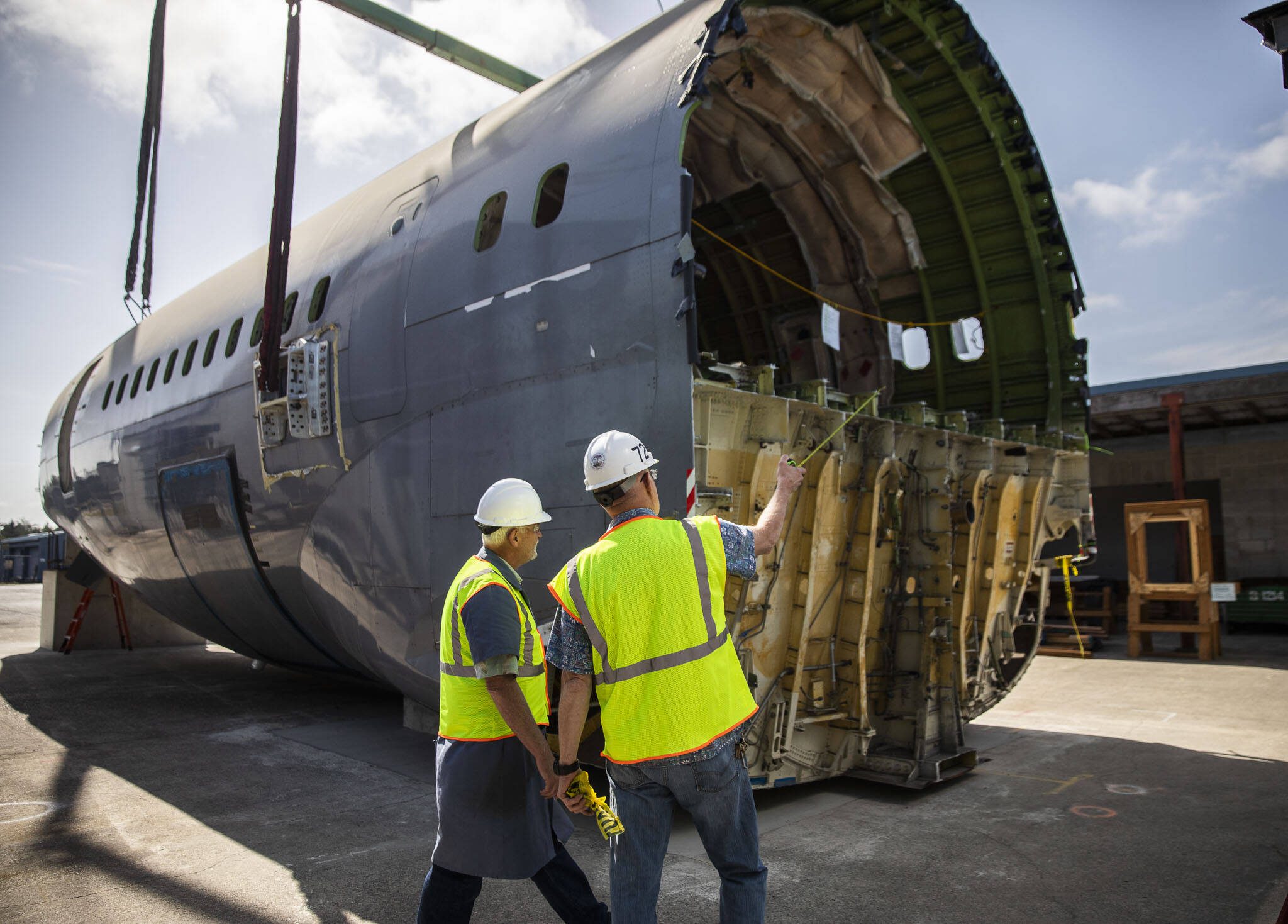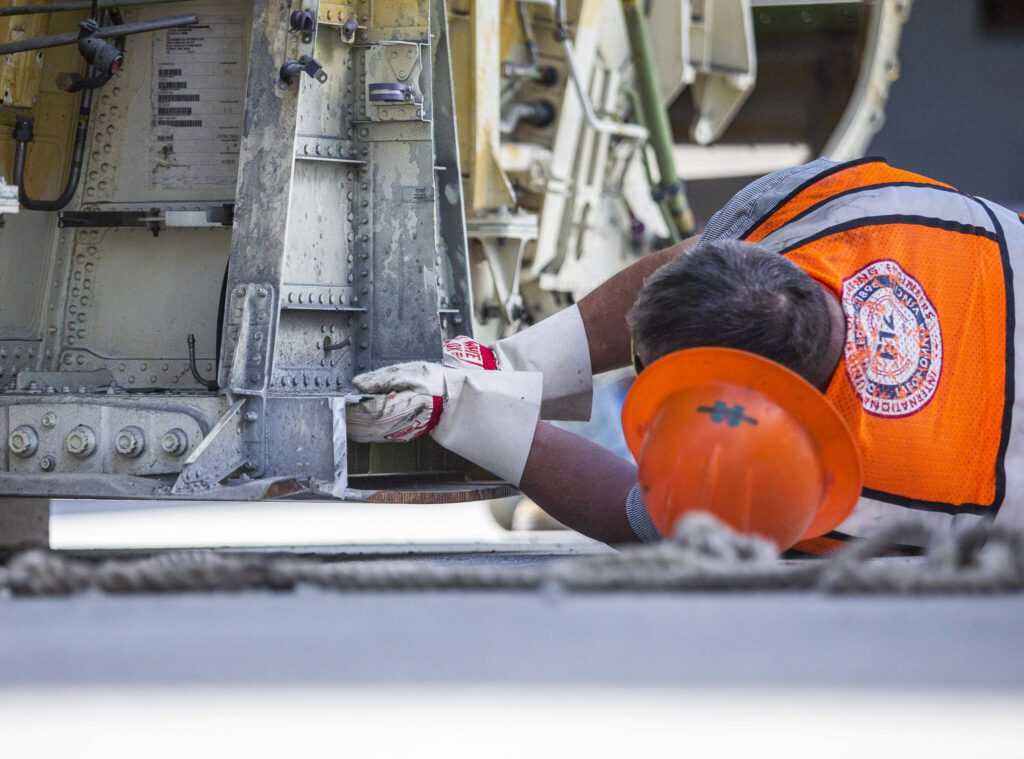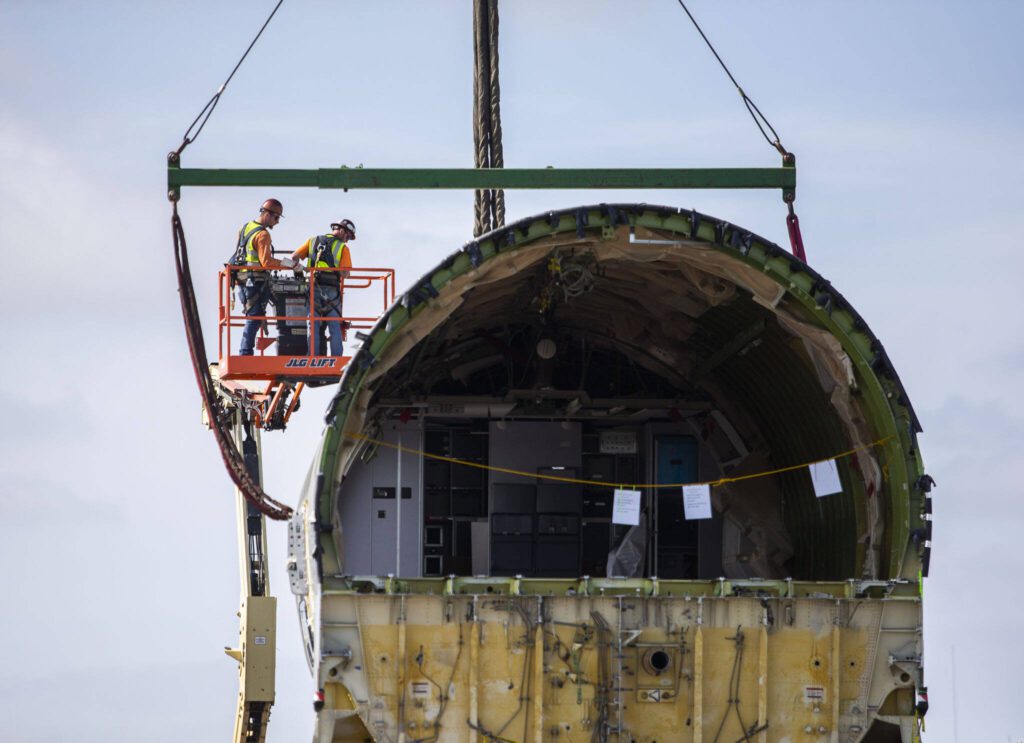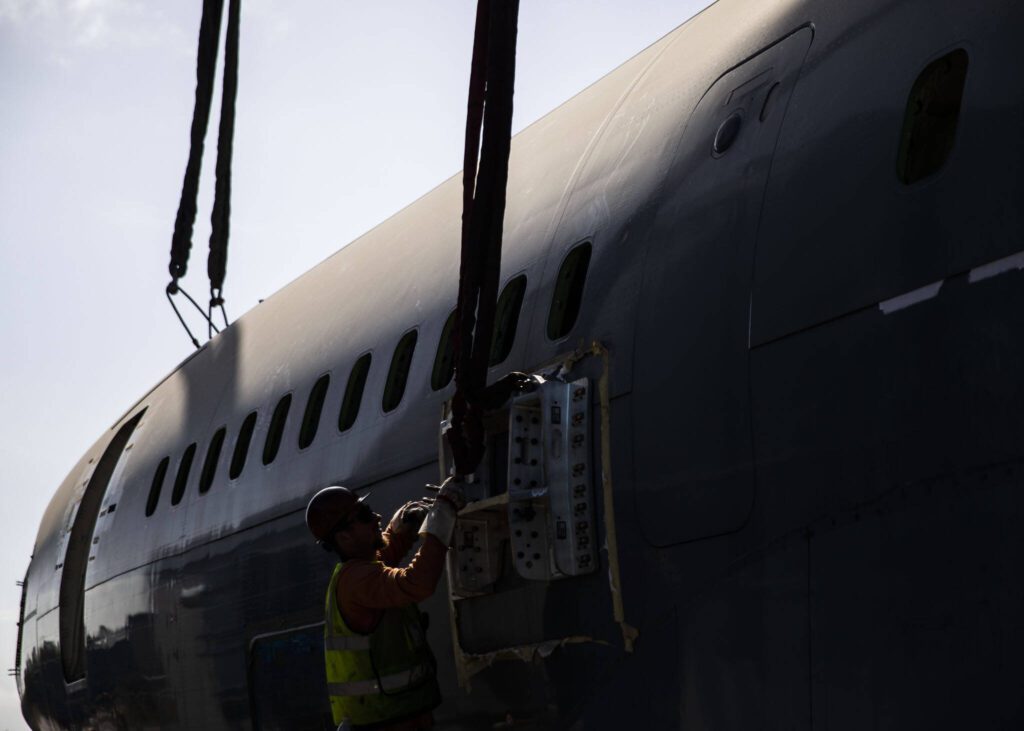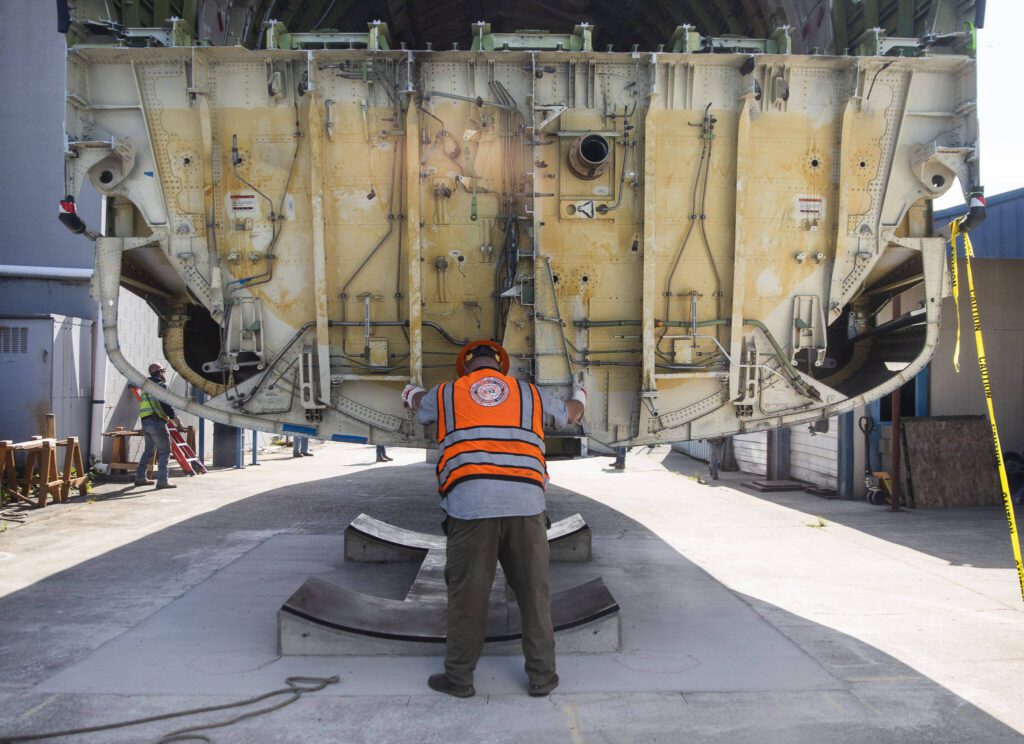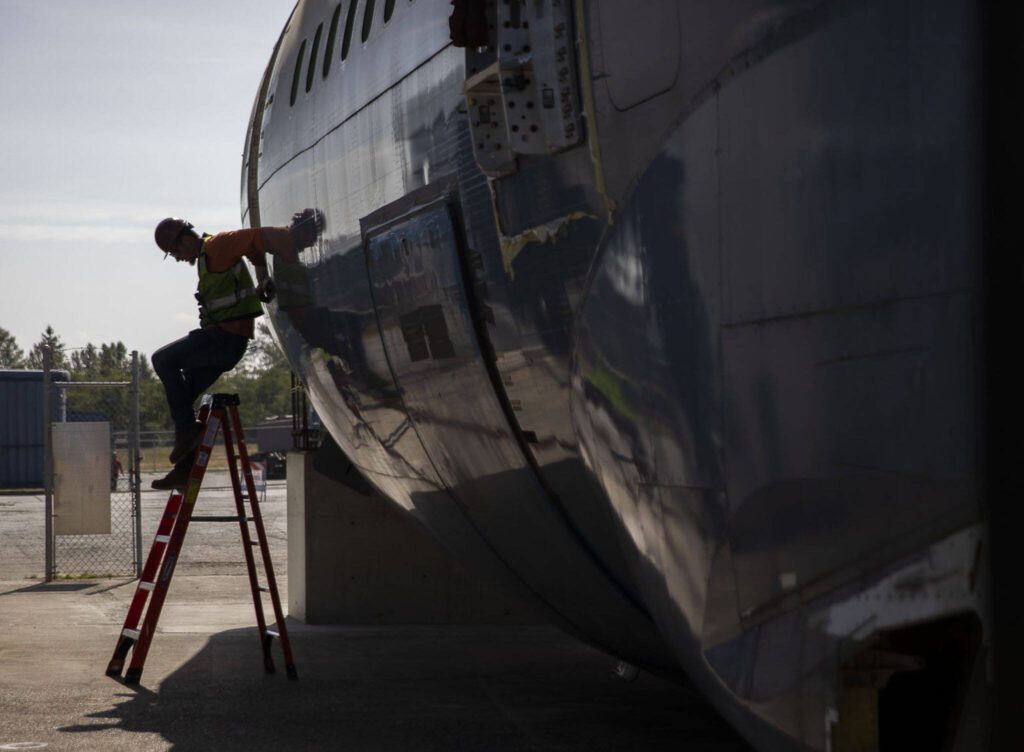EDMONDS — Its arrival was two years in the making, and the weather was perfect — rain or winds stronger than 15 mph would have been too dangerous. Spectators snapped photos as a crane hoisted the 12-ton fuselage into a custom-built concrete cradle.
Larry Cluphf, executive director of the Advanced Manufacturing Skills Center at Paine Field, had spent the morning pacing the designated 200-foot radius observation zone in a dark business suit and safety goggles. His silver airplane lapel pin glistened in the sunlight.
Cluphf had eagerly awaited the Boeing 767 tanker fuselage — think Air Force cargo plane — as a way to provide realistic, hands-on training for aerospace manufacturing students, as part of the Washington Aerospace Training & Research Center at Edmonds College.
“This is going to be a game changer in how we offer our training,” Cluphf said.
Boeing donated the fuselage on Thursday in partnership with the training center, which launched in 2010 as a response to a so-called “silver tsunami.” The aerospace industry had anticipated a flood of retirees, Cluphf said, and generations of knowledge would leave with them.
“This Boeing 767 fuselage section helped train thousands of Boeing teammates over the years,” Boeing said in a statement. “Now it will provide real-world experience to students training to join the aerospace industry and take on manufacturing roles that are in high demand.”
The center provides five speciality programs to fast-track training for aerospace manufacturing students: assembly mechanics, tooling mechanics, manufacturing composites, electrical assembly and quality assurance. Cluphf said when students graduate, Boeing often hires them directly without interviews.
“We’re not just here to give people jobs, we’re here to give them careers,” Cluphf said.
Ethan Ratigan, a 19-year-old in the pre-apprenticeship program, watched the fuselage delivery with his classmates. He said everything he’s heard about the training center has been positive.
“I might join after this program,” he said. “I know a few people who’ve done it and they said it’s really cool.”
Ratigan said he’s interested in learning how to drill rivet holes, an advanced skill students learn without a guide.
Inside the training center, assembly mechanic students learn to build airplane structures; electrical assembly students bundle and connect the miles of wire in an airplane; and tooling mechanic students, or “toolers,” practice detail work to make objects for the assembly line. By the end of five weeks, many students can draw intricate plans for airplane design.
In the composite room, students work with fiberglass, carbon fiber and metal — materials used to build airplanes — and learn to meticulously inspect them for flaws. After students complete the program, they use the leftovers to create “toxic waste” art. In another room, students on the creative side can learn to make snowboards, drones and 3D printers.
“While it’s great (that students) can work on the benches and get very similar training to what they would get in a Boeing factory, nothing beats the experience of actually being on a plane,” Cluphf said.
Contractors and engineers will work together to convert the fuselage into an aerospace manufacturing training lab. They’ll need to build scaffolding and install heating.
The training center plans to have the retrofitted fuselage lab-ready by the fall.
Sydney Jackson: 425-339-3430; sydney.jackson@heraldnet.com; Twitter: @_sydneyajackson.
Talk to us
> Give us your news tips.
> Send us a letter to the editor.
> More Herald contact information.
